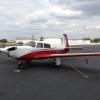Hurricane Prep
-
Members Online
- Jake@BevanAviation
- Oscar Avalle
- 1980Mooney
- SKI
- Taz
- Bryan G
- chrisburdzy98
- Lax291
- eman1200
- Schllc
- Echo
- TCC
- larryb
- 802flyer
- Buckster
- Air pirate
- Zulee
- RoundTwo
- M20S Driver
- 47U
- richardbrochu27
- William A
- Taildraggerpilot
- 65MooneyPilot
- Ragsf15e
- N201MKTurbo
- Minisky
- PeteMc
- midlifeflyer
- ta2too
- jamesyql
- ohdub
- BlueSky247
- Mark89114
- Igor_U
- CAV Ice
- Geoaviator
- mooney_flyer


Recommended Posts
Join the conversation
You can post now and register later. If you have an account, sign in now to post with your account.